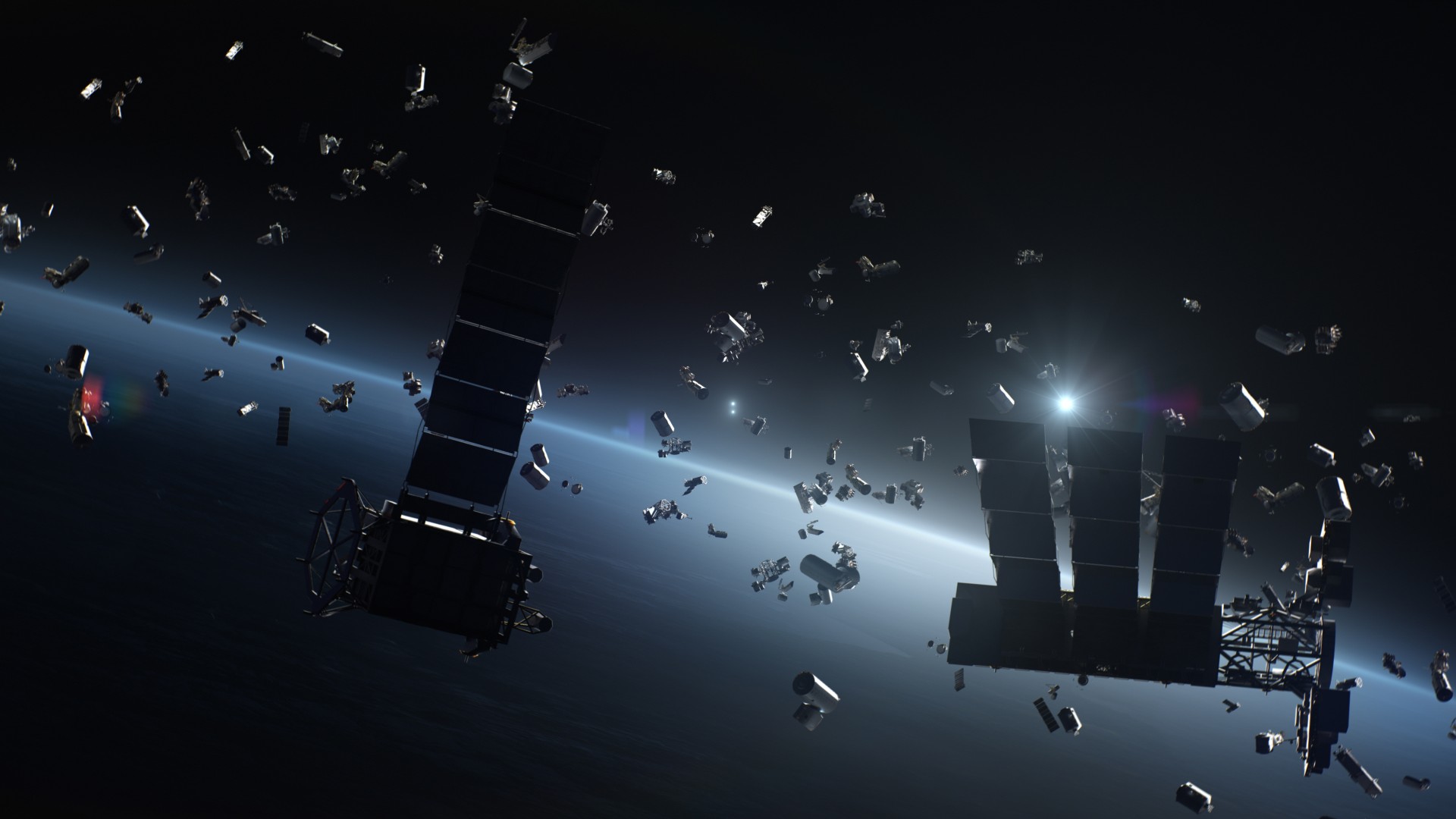2 big pieces of space junk nearly collide in orbital 'bad neighborhood'
Had the two objects collided, thousands of more pieces of debris could have been created.

Low Earth orbit was the site of a near-miss today (Jan. 27) that had the potential to create thousands of pieces of hazardous space debris.
Satellite monitoring and collision detection firm LeoLabs spotted a near-miss between two defunct Soviet space objects, a rocket body and dead spy satellite, that missed one another by an incredibly small margin. According to a LeoLabs statement posted to Twitter on Friday (Jan. 27), the two objects missed one another by a distance of 20 feet (6 meters), with a margin of error of "only a few tens of meters."
While the two objects luckily did not collide, LeoLabs says the incident was very close to being a "worst-case scenario" that could have generated thousands of more pieces of space debris in a ripple effect. As low Earth orbit (LEO) becomes increasingly crowded, such close calls are becoming more common, highlighting the very real threat to the environment in which the International Space Station (ISS) and thousands of critical satellites operate.
Related: Getting space junk under control may require an attitude shift
According to LeoLabs, the two objects that narrowly missed one another were a defunct SL-8 rocket body and Cosmos 2361, a now-dead Russian spy satellite designed to intercept electronic signals such as radio communications or radar transmissions. Cosmos 2361 was launched in 1998, according to NASA, while the SL-8 is a U.S. Department of Defense nomenclature for the Kosmos-3 family of Soviet rockets that first entered service in 1964 and continued flying through 2009.
Too close for comfort... 😳Two large, defunct objects in #LEO narrowly missed each other this morning — an SL-8 rocket body (16511) and Cosmos 2361 (25590) passed by one another at an altitude of 984km. 🚀⚠️ #SpaceDebris pic.twitter.com/pF9o6BuZ5QJanuary 27, 2023
The near-miss happened in what LeoLabs calls a "bad neighborhood" in LEO that spans from 590 to 652 miles in altitude (950 to 1050 kilometers). "This region has significant debris-generating potential in #LEO due to a mix of breakup events and abandoned derelict objects," LeoLabs wrote in another Twitter post Friday (Jan. 27). "In particular, this region is host to ~160 SL-8 rocket bodies along with their ~160 payloads deployed over 20 years ago." LeoLabs added that there were 1,400 similar near-misses in this region of LEO between June and September 2022 alone.
Incidents such as these underscore the need for new strategies at mitigating or removing orbital debris from LEO. There are currently close to 30,000 pieces of orbital debris being tracked by the Department of Defense, but many more are lurking that are too small to be detected, according to NASA.
Get the Space.com Newsletter
Breaking space news, the latest updates on rocket launches, skywatching events and more!
The threat that orbital debris poses routinely makes itself known. The ISS, which orbits lower than this recent near miss at around 254 miles (408 km), has had to perform numerous avoidance maneuvers in recent months to dodge space junk. A minuscule object, possibly a piece of orbital debris, is thought to be responsible for a leak aboard a Soyuz spacecraft currently docked at the ISS.
As more and more pieces of debris accumulate in Earth orbit, collisions between them can generate even more fragments in a frightening theoretical ripple effect known as the Kessler Syndrome. If left unmitigated, the theory proposes that cascading space debris impacts could someday hinder humanity's space ambitions by rendering the space around Earth unpassable. To try and remedy the situation, a large number of concepts for how to decrease space debris are currently being proposed and tested worldwide.
Follow Brett on Twitter at @bretttingley. Follow us @Spacedotcom, or on Facebook and Instagram.
Join our Space Forums to keep talking space on the latest missions, night sky and more! And if you have a news tip, correction or comment, let us know at: community@space.com.

Brett is curious about emerging aerospace technologies, alternative launch concepts, military space developments and uncrewed aircraft systems. Brett's work has appeared on Scientific American, The War Zone, Popular Science, the History Channel, Science Discovery and more. Brett has English degrees from Clemson University and the University of North Carolina at Charlotte. In his free time, Brett enjoys skywatching throughout the dark skies of the Appalachian mountains.









